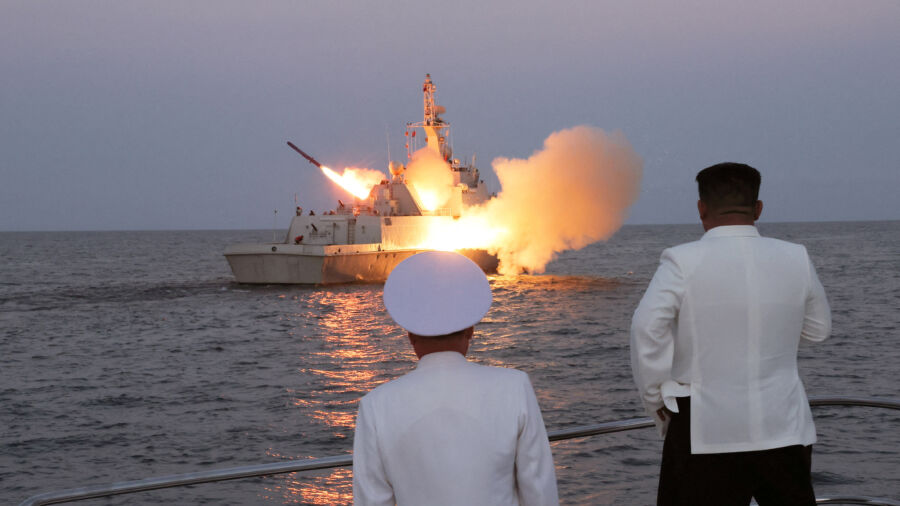North Korean leader Kim Jong Un has overseen a test of strategic cruise missiles, the country’s state news agency KCNA said Monday, as South Korea and the United States kicked off their largest-ever joint military drills.
Mr. Kim visited a navy fleet stationed on North Korea’s east coast to oversee the missile test aboard a warship, KCNA said, but without specifying the date of his trip.
According to the state mouthpiece, the purpose of the launch was to test the “combat function of the ship and the feature of its missile system,” while improving sailors’ capability to carry out an “attack mission in actual war.”
KCNA reported that the missile had successfully hit its target, citing Mr. Kim as stating that the ship would maintain “high mobility and mighty striking power and constant preparedness for combat to cope with sudden situations.”
South Korea’s defense ministry said it had detected signs of the launch, but labelled the claims made by KCNA as “exaggerated” and “different from the facts.”
Choi Il, a former navy officer who runs a think tank focusing on naval power, said the missiles aboard the ship have a range of more than 620 miles (1,000 km), and hit land-based targets. The new ship appears to be a corvette-class vessel, Mr. Choi added, designed to minimize radar detection.
The North Korean missile test came in response to the joint military drills by South Korea and the United States, which began on Monday.
The so-called Ulchi Freedom Shield exercises will be of “the largest scale ever,” according to the South Korean military, involving tens of thousands of troops from both participants, as well as from some member states of the U.N. Command.
The yearly drills are specifically designed to exercise a solid joint response in case of a North Korean missile attack.
South Korean president Yoon Suk Yeol said that the summer drills would feature several contingency scenarios, such as cyber, terror, and drone attacks, and a disinformation campaign by the North.
“True peace is preserved only by overwhelming force, not by one-sided begging or goodwill,” Yoon told a meeting of the National Security Council.
“North Korea talks about preemptive nuclear strikes and preparations for an offensive war, but we will immediately and overwhelmingly retaliate for any provocations.”
North Korea has always considered the drills a preparation for an invasion, even to the point of threatening nuclear war during the joint U.S.-South Korean springtime military drills held in April.
South Korean lawmakers have said the North could test-fire an intercontinental ballistic missile or take other military action to protest the allies’ drills or last week’s security summit between South Korea, the United States, and Japan—which also took aim at China as a potential threat in the South China Sea.
Over the past two years, North Korea has been advancing its missile program, building new intercontinental rockets which could be loaded with nuclear warheads.
Mr. Kim also vowed to further reinforce the North Korean navy with improved combat efficiency and modern means of surface and underwater offensive and defensive capabilities, KCNA reported.
“We would put spurs to the modernization of naval weapons and equipment, including the building of powerful warships and the development of shipboard and underwater weapon systems,” Mr. Kim was quoted as saying.

